Configuring Rules
Rules can be specified/created in two different ways or as a combination of the two methods. When both methods are employed, they are joined using an "OR" relationship. This means that if either one occurs, that a subsequent notification will be emitted. This is contrast to an "AND" relationship where both conditions would need to be in order for a notification to be triggered.
Rules have a name field that can be specified. The name must be unique.
Government-Issued Watches and warnings
As mentioned above there are two different ways to describe a rule. The first is by choosing from predefined weather phenomena as defined by the National Weather Service. As mentioned in the text and link in the application, these rules are only applicable to points in the United States and Canada. This widget appears as:

To describe what one is interested in, they must specify the weather phenomena and the significance level. One has the ability to select all and deselect all for both of these selections. Further, one can choose groups of weather phenomena. For instance, one can express their interest in weather phenomena that affect visibility and several different selections will be made. Of course, this works in reverse as well, one can remove selections by group as well. After selecting all visibility-related weather phenomena, the dropdown would appear as:
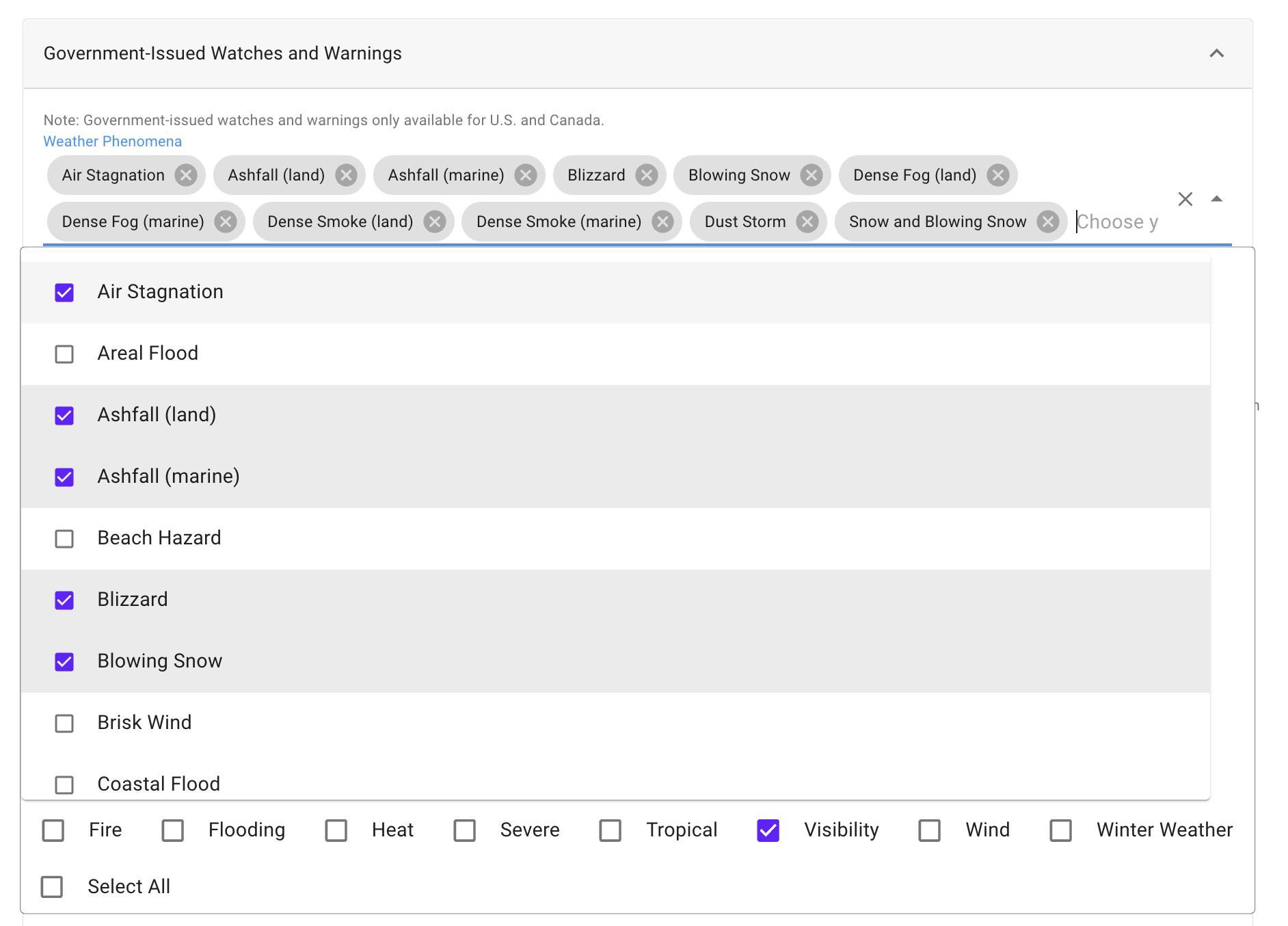
Choosing the significance level works similarly, but no groupings exist nor are any necessary. Selecting all the signifance levels at once would appear as:
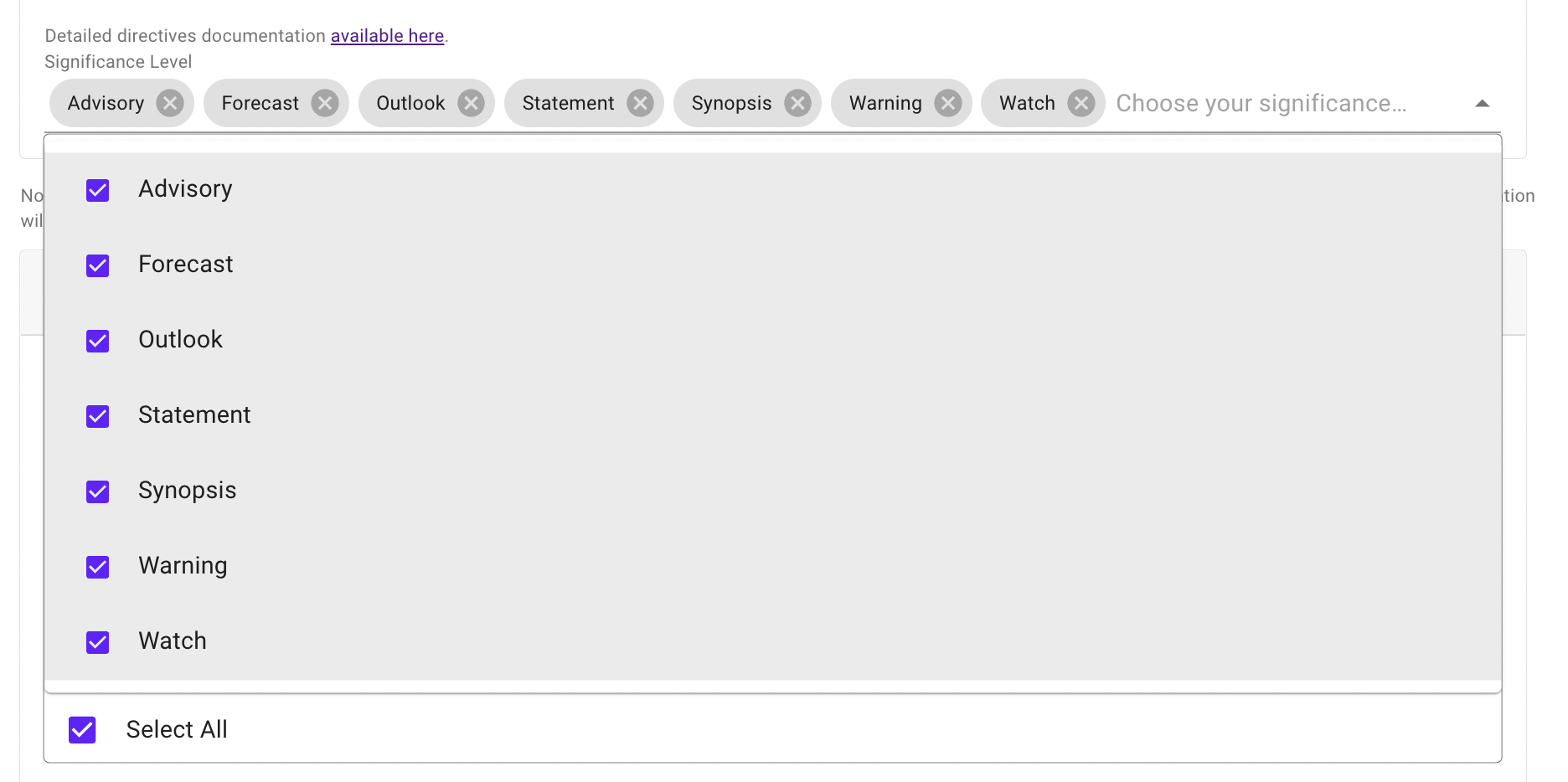
Lastly, one can search for specific weather phenomena by making use of the autocomplete feature as shown below:

One can do similarly for the significance levels, but this is of less utility given the small number of levels.
User-Defined Rules
The second way that one can specify a weather rule is by creating a user-defined rule.
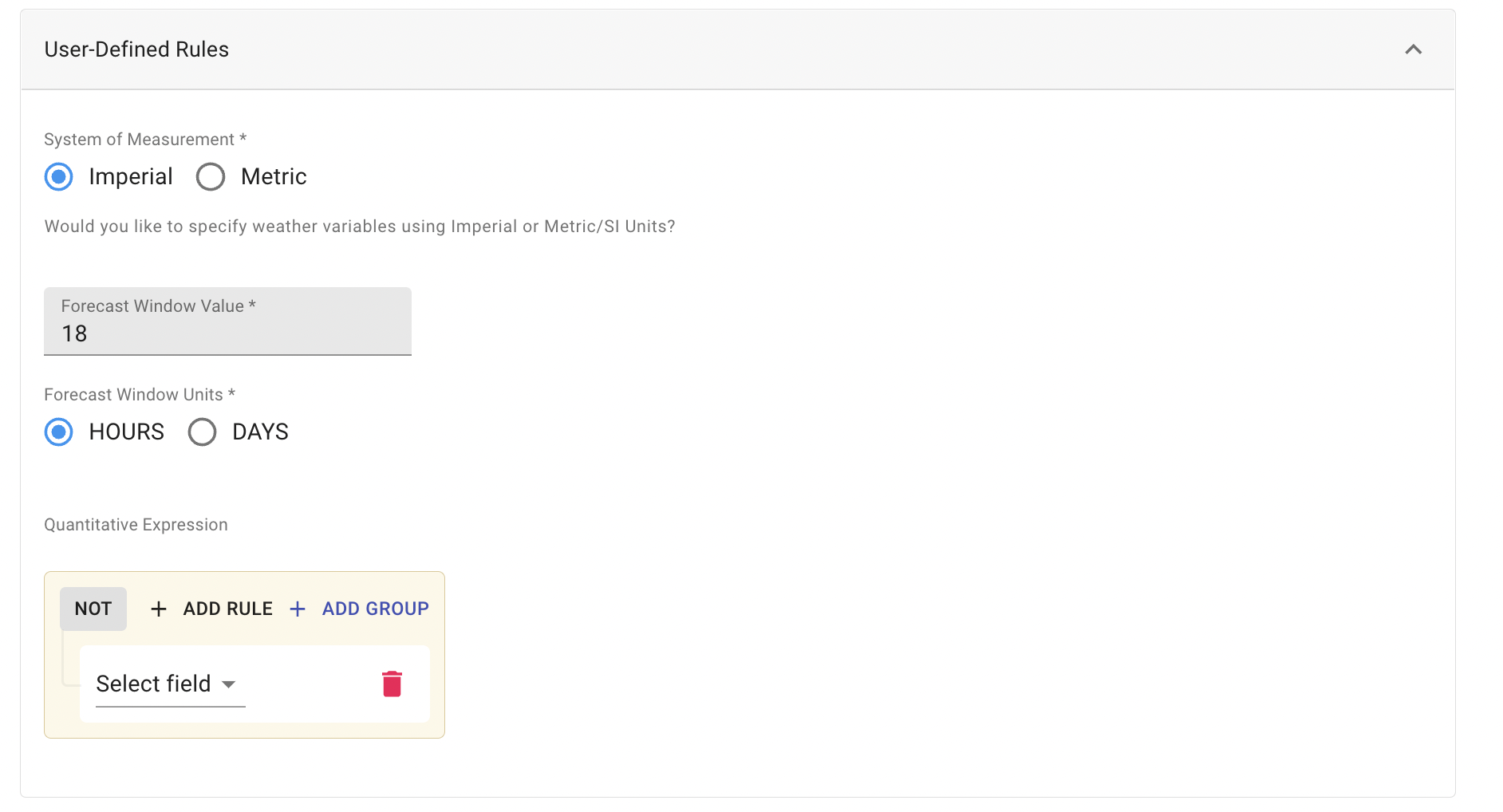
One can indicate whether they would like to use metric or imperial units to define their rule.

This selection defaults to whatever the user has specified in their settings, but this is available for modification when creating a new rule.
One can access their settings by clicking on "settings" in the top-right drop-down menu.

Upon arrival at the user-profile/settings page, one can set their system of measurement preference to either imperial or metric units.
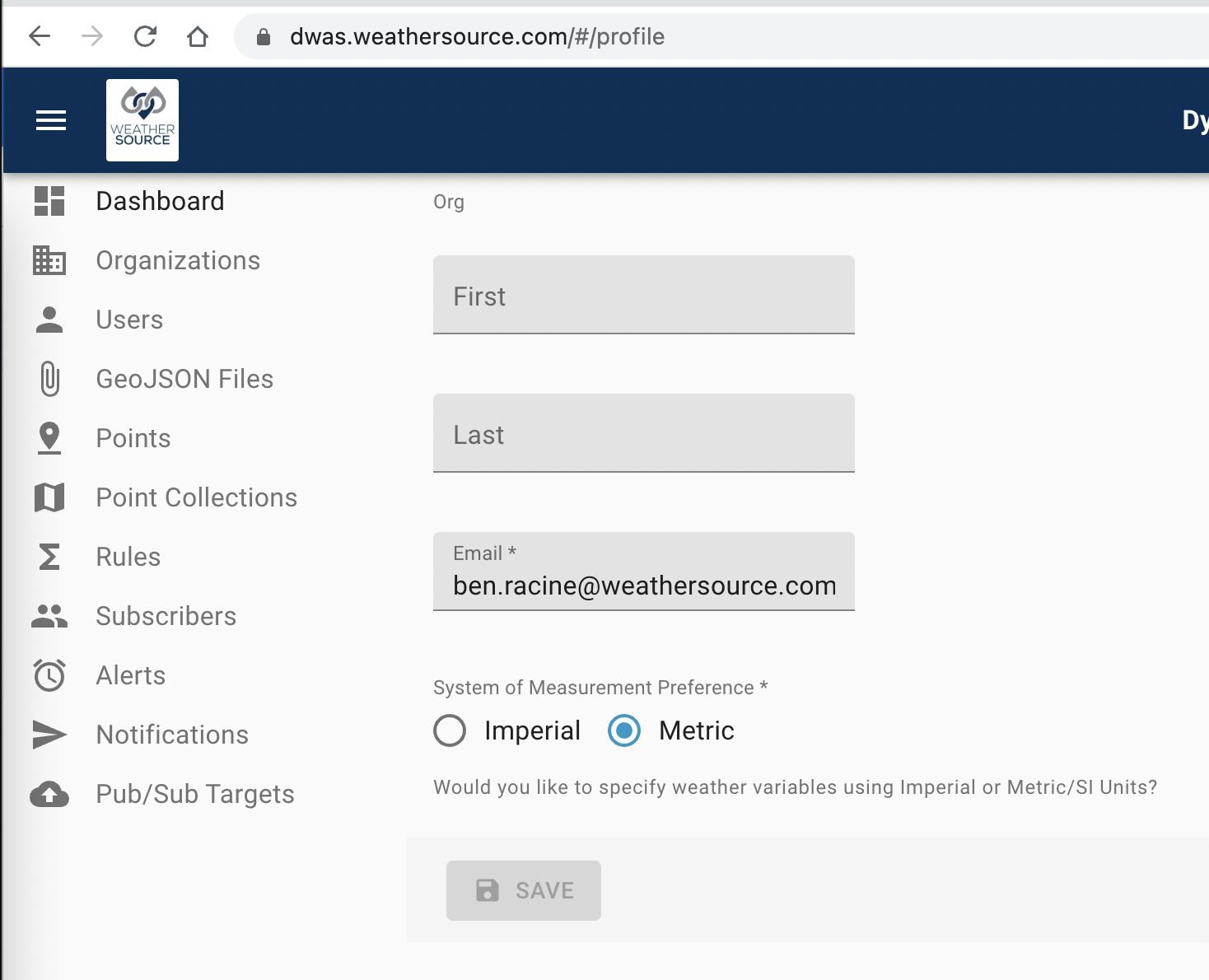
One can also specify how far out to look ahead for forecasts using the appropriate combination of Forecast Window Units and Forecast Window Values. The example shown below is looking ahead 18 hours.

When one switches the forecast window between hourly and daily units, the available weather parameters must change. Direct weather variables are available in the hourly case where minimums, maximums, and averages are only available when the weather windows is defined in daily units.
The DWAS service offers a sophisticated query builder widget for these ends. This widget provides the ability to create a tree-like weather rules expression. Sibling rules can be associated with each other using an "or" or an "and" relationship. "Or" relationships mean that either one will trigger the alert while an "and" relationship means that both criteria must be met. As a relatively simple example, the selections below describe a scenario of interest that is cold and windy.
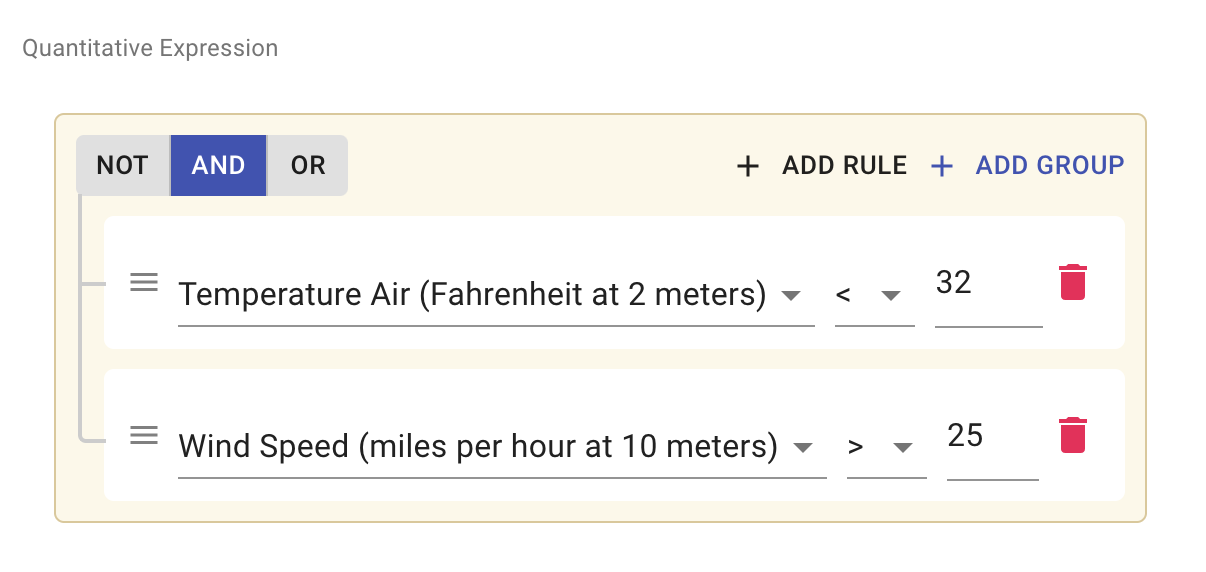
Roadmap Ahead
The DWAS team is busy trying to turn the existing NWS rules into a set of predefined set of "user-defined" rules such that these same events of interest can be applied globally.
We have also identified several additional capabilities that we are interested in pursuing. We are interested in allowing users to specify:
- Duration of a specific criteria.
- Precipitation aggregation rates.
- Weather variable values by a specific number of standard deviations away from normal.
Lastly, we also have our eyes on additional weather phenomena such as NEXRAD hail and tornadoes, tropical cyclones, and storm surges.
Ok, let's move on to subscribers.